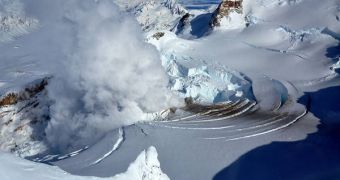Mount Redoubt, just 100 miles off Alaska's capital Anchorage, has erupted for the first time in 20 years, totaling a number of 6 blasts, spread out between Sunday evening and Monday evening. The dangerous eruptions have sent ash about 9 miles sky-high, and the National Weather Service (NWS) has issued an ash alert for other communities, North and Northeast of the volcano.
The Susitna Valley area was under an ash-advisory alert until 5am on Tuesday morning, as authorities wanted to make sure that none of the people in the region was caught off-guard by the potential ash clouds that might have formed. Since Monday, local Observatory officials announced that there was no risk of the volcano sending large clouds of heavy ash towards human settlements, and that only finer particles would most likely make their presence felt.
There is still no agreement between experts and geologists as to when they eruptions will stop. If this is a regular venting of the pressure chamber deep in the ground, then it's in everyone's best interest to expect it to last as long as possible, as the more pressure gets released, the lesser the chances of a violent explosion. If pressure is allowed to mount inside the chamber, then violent eruptions and tremors could wreak havoc in a large part of the area.
Dave Stricklan, NWS hydrometeorogical technician, says that only fine ash will fall in the region. “Just kind of a light dusting. The heavier stuff drops out very quickly, and then the other stuff filters out. There's going to be a very fine amount of it that's going to be suspended in the atmosphere for quite some time, but nothing to really affect anything such as aviation travel. The heavier stuff will filter out.”
“Anyone with a pre-existing respiratory problem is advised to stay indoors until the ash settles. If you do need to go out, a mask is recommended,” Alaska chief medical officer Dr. Jay Butler warns. “You can’t fly in this stuff. Ash is too risky to risk damaging your equipment. I’m not making money if I ruin my stuff,” the owner of transport company Denali Flying Service, Barry Stanley, adds.

 14 DAY TRIAL //
14 DAY TRIAL //